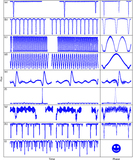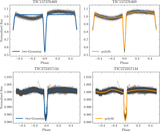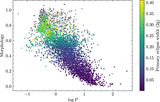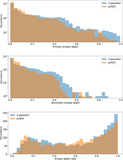Image Details
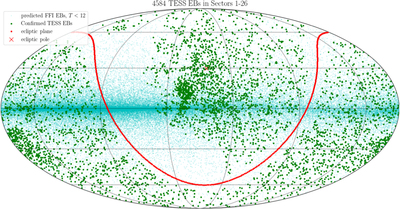
Caption: Figure 1.
Map of TESS EBs observed in sectors 1–26 in the Galactic reference frame. Depicted in green are all vetted and validated EBs observed with the 2 minute cadence. Depicted in cyan are the simulated EBs brighter than T = 12 (Wells & Prša 2021). The dearth of systems in the region north of the ecliptic plane is due to the change in boresight in sectors 14–16 and 24–26, where the satellite was pointed at +85° instead of the nominal +54° to mitigate excessive contamination by stray Earth light and moonlight in cameras 1 and 2.
Copyright and Terms & Conditions
© 2022. The Author(s). Published by the American Astronomical Society.


